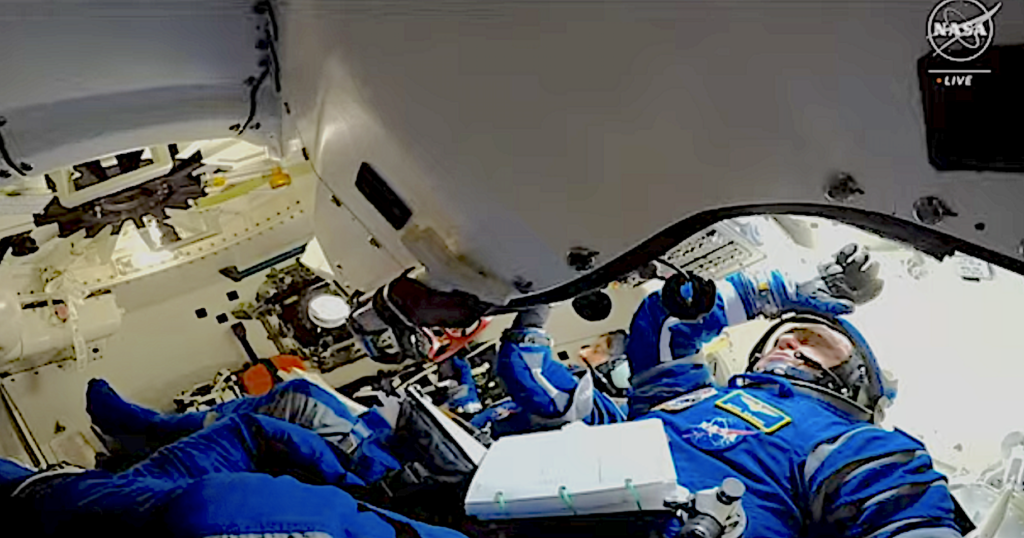
The following is another update from Boeing revealing procedures and practices that will enable Boeing’s Starliner to return NASA’s astronauts back home — finally…
Ground testing of a Starliner Reaction Control System (RCS) thruster at White Sands Test Facility in New Mexico is complete, and teams are now turning their attention to data reviews. The test objective was to observe thruster degradation so teams could get a better understanding of why some thrusters were deselected in-flight and what, if any impacts, returning those thrusters to service could have on the remainder of the Crew Flight Test (CFT).
The new thruster was put through one of the most stressing launch-to-docking firing sequences with over 1,000 pulses to simulate CFT conditions, including manual flying and rendezvous with the International Space Station. It then went through five undock-to-deorbit burn profiles with 500 pulses. While the team recorded terabytes of data from those profiles firings, they wanted to see what additional learnings they could glean from more aggressive firings.

“We decided to run additional profiles with longer and more frequent pulses to see if we could more closely simulate the higher thermal conditions the thrusters experienced in-flight,” said Dan Niedermaier, the lead Boeing engineer for the thruster testing. The team was able to replicate the thrust degradation on the ground.

Boeing and NASA engineers will proceed with thruster disassembly and inspections, and move forward with finalizing flight rationale in support of readiness reviews for Starliner’s nominal return to Earth with commander Butch Wilmore and pilot Suni Williams in the coming weeks. NASA’s Commercial Crew Program Manager Steve Stich and Boeing Starliner Program Manager and Vice President Mark Nappi will provide an update on progress during a media telecon next week on www.nasa.gov/live.

Approximately 200 miles away from the ground testing, in Albuquerque, New Mexico, Boeing’s Laser & Electro-Optical Systems team shared a video of the moment Starliner approached the space station for docking on June 6. Using advanced daytime satellite tracking technology, the team combined a modified infrared telescope with a control computer and a specialized mount to compensate for the Earth’s rotation to capture the docking.
Meanwhile, Starliner remains in docked quiescent mode, which means Wilmore and Williams are supporting the Expedition 71 crew — or as Williams likes to call it, the “Expedition 71 plus” crew — with space station research and maintenance. Both astronauts participated in vein scans using the Ultrasound 2 device on Monday, July 15. Doctors on the ground monitored in real-time as the pair took turns imaging each other’s neck, shoulder, and leg veins. Afterward, Wilmore scanned the veins of NASA Flight Engineer Matthew Dominick to help researchers understand how microgravity affects the human body. Wilmore and Dominick also spent a portion of the day taking inventory of the food stored aboard the space station.
Note: Previous Satnews story
Boeing’s Starliner SCRUBBED at T-3:50 with NASA astronauts offloading … again

At the last few minutes the astronauts’ nerves are beginning to show. Photo captured on Saturday, June 1, by Satnews from ULA video stream.
Williams worked on a pair of differing studies as she first explored using the microgravity environment to manufacture higher quality optical fibers than on Earth. She also investigated using fluid physics such as surface tension to overcome the lack of gravity when watering and nourishing plants grown in space.
